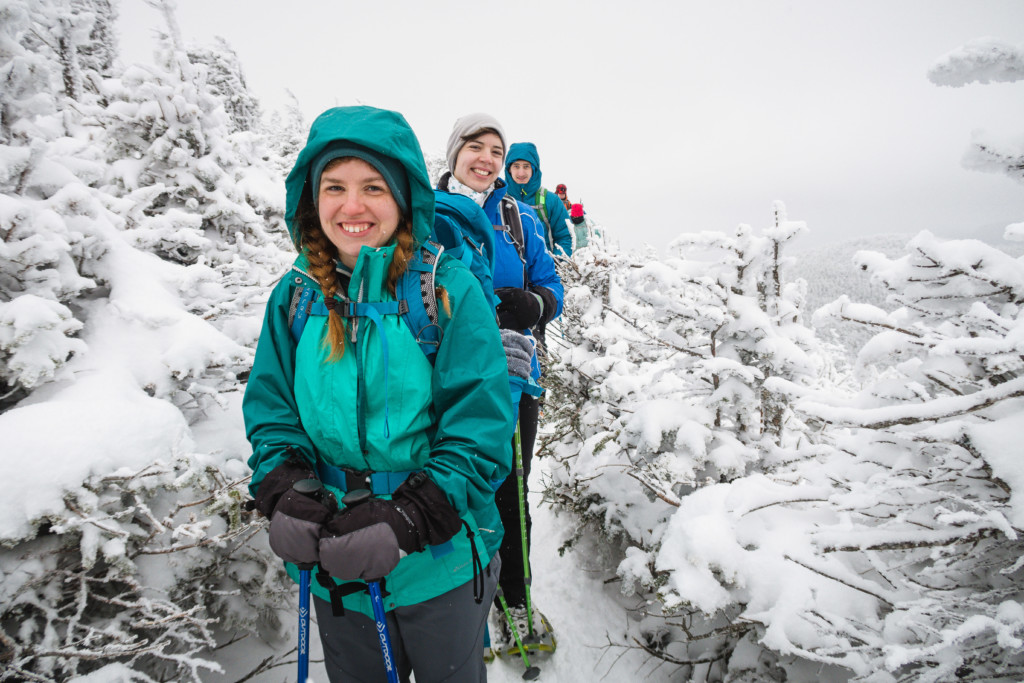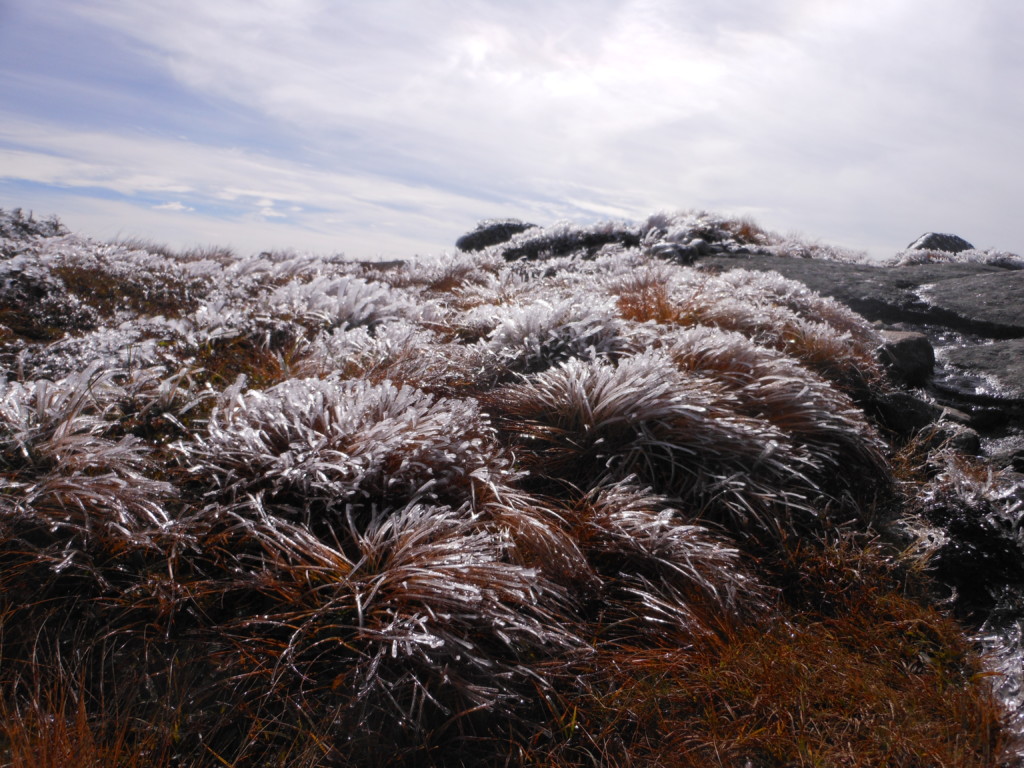3 Things to Know about Winter Hiking Above Tree Line
3 Things to Know about Winter Hiking Above Tree Line
Tree line: the line or altitude above which no trees grow. Many popular summits in the Adirondack High Peaks Wilderness—namely Cascade, Wright, Algonquin, and Marcy—have sections of trail that are completely exposed above tree line. While this offers astounding views of the surrounding landscape, it also brings with it important safety considerations for the winter months. Here are three things to know about going above tree line in the winter.
- Cover up!
Once you are above tree line, there is nothing between you and the elements. As such, frost bite is a major concern. If summit temperatures are around zero degrees Fahrenheit and there is a light wind (5-10mph), it only takes 30 minutes for frost bite to develop on exposed skin. And these are relatively tame conditions. It is not uncommon for summits to experience temperatures well into the negatives with sustained winds speeds above 40-50mph in the winter, where frost bite can develop in less than 10 minutes.
To avoid this, it is important to cover up all exposed skin when you are above tree line with insulated, non-cotton layers, including your face and eyes. A waterproof windbreaker, ski goggles and balaclavas are all important pieces of gear for alpine ascents. You can read more about winter layering here.

- Watch for white outs
To keep yourself oriented, even when visibility is poor, it is a good idea to take a compass back bearing when you reach tree line. To do so, point your compass at the summit, take note of the bearing, and subtract 180 degrees. Remember this number. If you get caught in a white out on the way up to the summit, you will be able to use this bearing to turn around and guide yourself back to tree line using your compass.
Click here to watch a great video showcasing white out conditions and how to guide yourself safely out of them.
- Do the rock walk
If you are above tree line, then chances are you are hiking around alpine vegetation. Due to thin soils and their diminutive size, these plants are easily killed by trampling, even in the winter months. In particular, the metal spikes on Microspikes, crampons, and snowshoes can cause significant damage to plants hiding beneath thin snow and ice packs. You can protect New York’s alpine vegetation by sticking to bare rock surfaces while above tree line and following the trail, which is marked by rock cairns. You can learn more about alpine vegetation in the winter months here.

Related
ADK Trip Planning Sessions
Need help planning your backcountry adventure? Schedule a personal, online session with an ADK staff […]
Benefits of Visitor Use Management
Since the creation of some of the first parks and protected areas in the United […]
Mud Season: Quick Facts
Just what is mud season? Running anytime from late March into mid-June—it varies each year […]
Spring on the NPT
by Jeffrey Case In the Spring a fuller crimson comes upon the robin’s breast; In the […]

